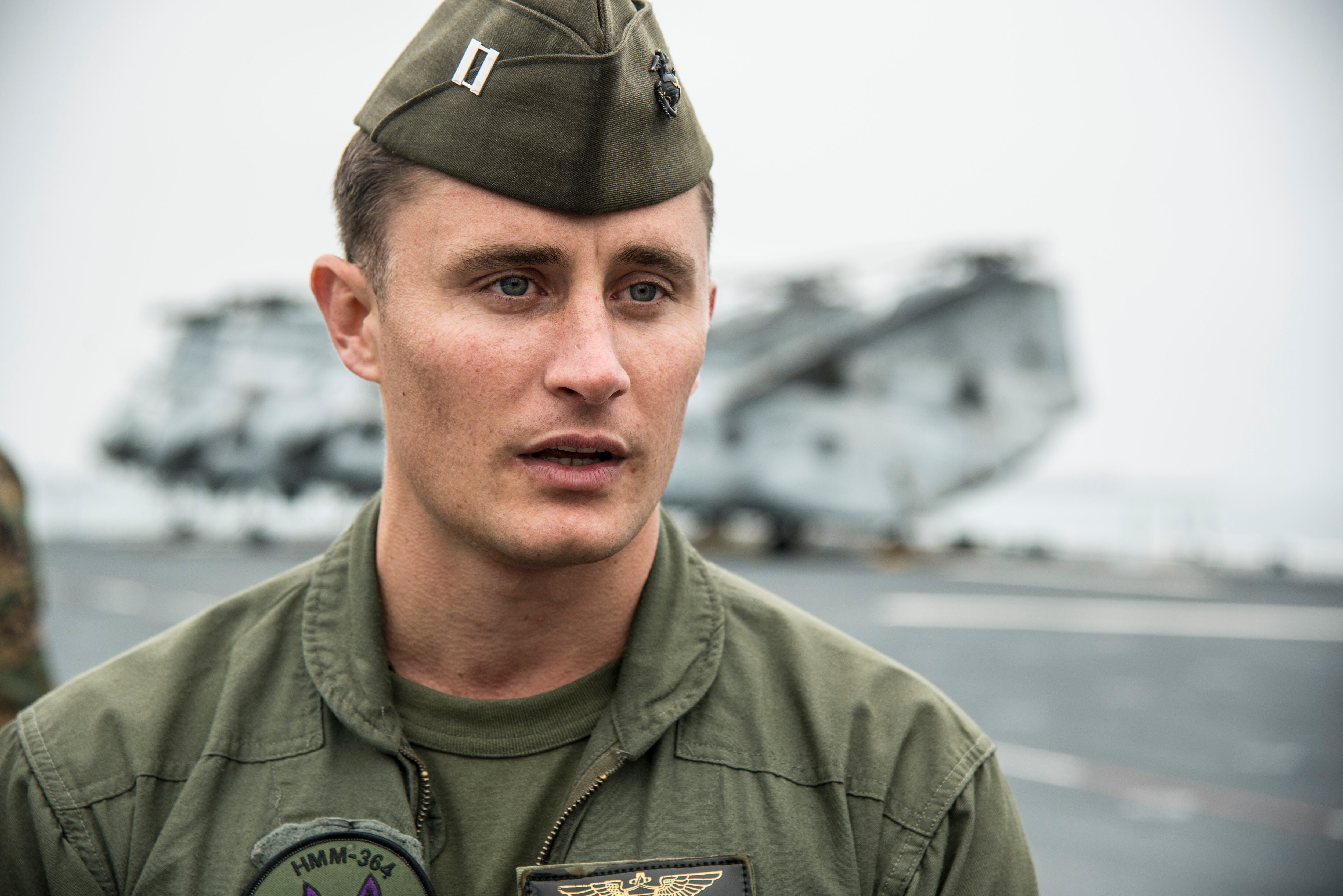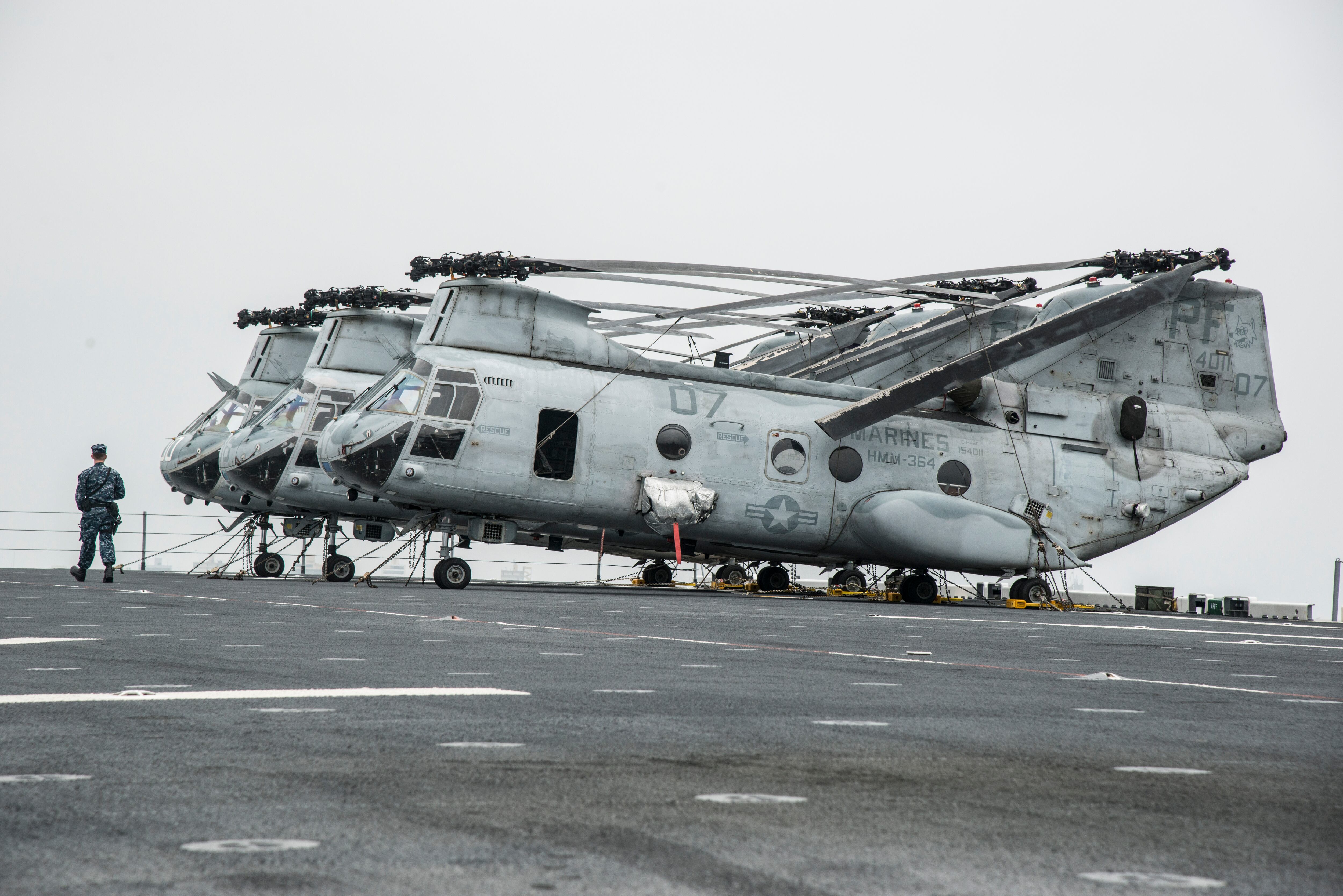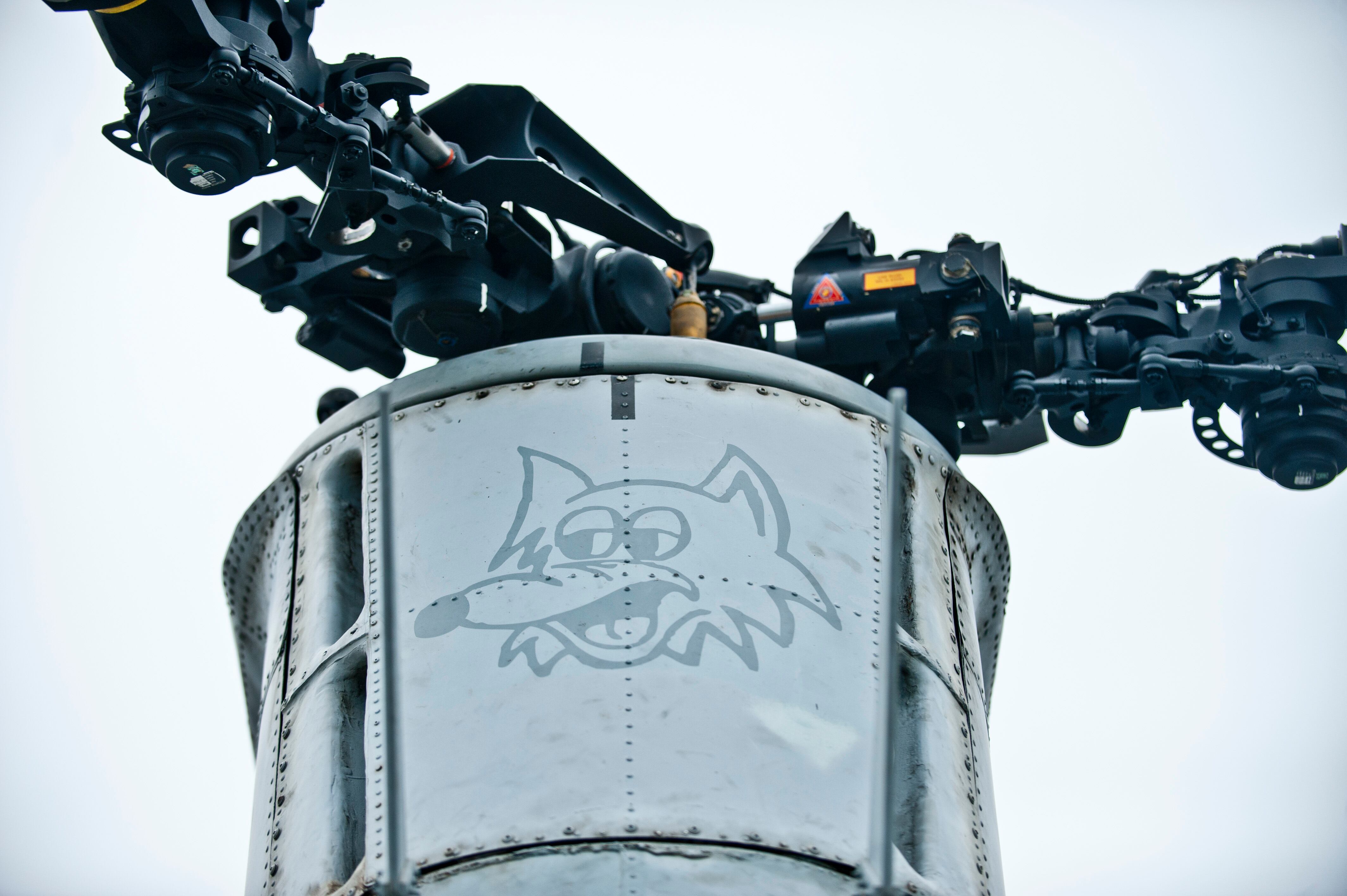This story first appeared in the Sept. 29, 2014, issue of Marine Corps Times.
ABOARD THE AMPHIBIOUS ASSAULT SHIP AMERICA, off the coast of Peru — Several generations of Marine aviation idled just yards apart aboard the Navy's newest warship during its recent cruise around South America toward its home port in California.
CH-46E helicopters from Marine Medium Helicopter Squadron 364, the "Purple Foxes" sat aboard the amphibious assault ship America not far from four MV-22B Ospreys, the aircraft that will replace them. Together, they represent one of many transitions planned for Marine aviation.
The Sea Knights — known throughout the Corps as "Phrogs" — have been a vital part of Marine aviation for more than 50 years, with operations in Vietnam, Afghanistan and Iraq.
Their last mission occurred in Chile during the Partnership of the Americas exercise. Now the pilots assigned to the helicopter squadron are preparing to fly their Phrogs one last time to "The Boneyard," the military's storage area for retired aircraft. Then, in October, HMM-364 will transition to an Osprey squadron, leaving the Phrogs to history.
"It's bittersweet — we have a lot of love for this wonderful platform," said Capt. Bradley Gibson, a CH-46E pilot with the Purple Foxes. "It seems like everywhere we go in the world, there are so many people who've flown in these helicopters dating all the way back to Vietnam."

Capt. Bradley Gibson, a CH-46E pilot with Marine Medium Helicopter Squadron 364, the "Purple Foxes," is learning to fly the MV-22B Osprey as his squadron transitions to the new tiltrotor aircraft.
Photo Credit: Rob Curtis/Staff, Staff
The Purple Foxes aren't the only Sea Knight squadron going through a transition. Two more — one in California and one in Virginia — will have to learn how to operate the Osprey.
Two-thirds of the Marines with HMM-364 will make the switch to the Corps' newer tiltrotor aircraft, said Lt. Col. John Field, the squadron's commanding officer. Most of the captains with the squadron are in the midst of training to fly the Osprey, Gibson said. They're also making preparations for a change of command since they'll get a new CO along with the MV-22s.
"We're going to start the next chapter in aviation history for our particular squadron," Gibson said.
New aircraft, same missions
Marines flying the Corps' new aircraft might have a lot of technical idiosyncrasies to learn, but their duties will otherwise remain the same, Field said.
The CO recalled joining the Purple Foxes as a young lieutenant at the start of his 22-year career in the Corps. One of his captains told him then that assault support was about getting the war fighter where he needs to be, on time in order for him to carry out his mission — a foundation that remains true today, he said.
"We're about supporting infantry Marines on the ground, so the machine we do that with may change, but the mission remains the same," Field said. "The Marines who do it are the same Marines whether they're flying CH-46s in Vietnam, Iraq or Afghanistan or the V-22 in places to be named later."

CH-46E Sea Knight helicopters with Marine Medium Helicopter Squadron 364 sit on the deck of the amphibious assault ship America off the coast of Lima, Peru in August. MV-22B Ospreys, which will replace the Sea Knights, were also aboard the America.
Photo Credit: Rob Curtis/Staff, Staff
Partnership of the Americas was Field's final operational mission. Only officers with less than 13 years of commissioned service will make the switch to Ospreys, so he'll soon be leaving the Marine Corps. For those earlier in their careers, though, he said it's a great time to fly in Marine aviation.
"It's really an exciting time to be on the ground floor, if you will, of a complete transformation in Marine aviation," he said.
Aside from transitioning the remaining Phrog squadrons into Osprey squadrons, here are some of the other ongoing changes in Marine aviation:
■ Marine Fighter Attack Squadron 121, based in Arizona, will be the first F-35B squadron to reach initial operational capability status next year.
■ Marine Fighter Attack Training Squadron 501 is moving from Florida to South Carolina, where it will be responsible for teaching new and experienced aviators how to operate the F-35B.
■ As of late August, 41 Marines have been qualified to fly the F-35B, according to a news release from Lockheed Martin. Once VMFAT-501is moved to Beaufort, the squadron plans to qualify another 15 pilots in the first year. Eventually, the goal is to qualify four times that many pilots annually.
■ Marine Operational Test and Evaluation Squadron 22 will stand up an F-35B detachment in 2015 at Edwards Air Force Base, California, to evaluate the aircraft's systems, said Capt. Dustin Pratico, a Marine spokesman at the Pentagon. The Corps is also preparing to stand up the first of four planned F-35C squadrons in 2019, Pratico said, which will fly the carrier variant of the aircraft.
■ The Corps will continue replacing the UH-1N Huey helicopter with the UH-1Y Venom. After 41 years of flying in the Marine Corps, the UH-1N was retired in August, but the Venoms have been gradually integrated into the fleet since 2008. The newer version uses the same airframe, but is faster, can fly higher, has a longer range and can lift more than its predecessor. The Corps expects Bell Helicopter to deliver 160 Venoms by 2018.
■ The AH-1Z Viper is replacing the AH-1W Super Cobra. The Viper reached initial operational capability status in 2011, and the Corps is expected to continue integrating the new helos into the fleet through 2021.
■ The Corps is continuing work on the CH-53K King Stallion. The heavy-lift helicopter is expected to reach initial operational capabilities in 2019 and will replace the CH-53E Super Stallion, which is expected to remain in service through 2027. The new aircraft is expected to move cargo further and faster than its predecessor.
Field said the recent evolution of Marine aviation highlights the Corps' ability to adapt.
"As technology changes, we look to capitalize on those advances so we can better accomplish the missions of supporting the infantry Marine and responding to the nation's crises," he said.
Preserving a legacy
As Peruvian officials toured some of the Phrogs on display aboard the flight deck, Gen. John Kelly, head of U.S. Southern Command, shared a memory about the tandem rotor transport helo with their crews.
"The first time I ever flew on a helicopter in my life, I was a [private first class] in the Marine Corps and those things were brand new," Kelly said.
That longstanding legacy means something to the Purple Foxes, Gibson said, and his generation of CH-46 pilots transitioning to the Osprey have an opportunity to merge their old squadron's legacy with that which has yet to be written. The best way is to carry the roots and lessons learned in a decades-old squadron along with them to their new unit, he said, which will help them continue to further Marine aviation.
"To be a part of the community that's going to set the benchmark and apply the same ethos to the new platform is also going to be very special," Gibson said. "The motto we've had since Vietnam is 'Give a sh-t,' and essentially what that means is we're going to do anything we can to support our role in aviation. So when it comes to the V-22, we're going to take that same ethos and that same energy and apply it and support the Marine Corps as much as we can."
"That part of us will never die," he said.

The "Purple Foxes" logo is displayed on a CH-46E Sea Knight helicopter with Marine Medium Helicopter Squadron 364. The squadron has a long history of flying the helos, known as "Phrogs," dating back to Vietnam.
Photo Credit: Rob Curtis/Staff
The CH-46 pilots are preparing to join a critical military occupational specialty once they're trained up to fly the Osprey. The aircraft has been vital to carrying out disaster relief and crisis response missions, and the demand for pilots who fly them and crews that maintain them isn't expected to slow anytime soon. But transitioning an entire squadron from one type of aircraft to another doesn't come without its challenges.
"How quickly can you make a community and culture? How do you get them to the same level of operational capability?" Gibson said. "I think that has its certain challenges in building that community and culture. And it's on us, as captains and field grade officers, to accept the V-22."
Field said being aboard the America alongside the Osprey was a good chance to "cross pollinate" between his CH-46 crews with some of the Marines from the Osprey squadron. They'll do the same when forming their new Osprey squadron, Gibson said. Since they began similar transitions with East Coast squadrons, they'll integrate some of those Marines into their squadron so they'll have a mix of subject matter experts, those who've flown the CH-46 for a number of years and some Marines just out of flight school.
"We're going to be this melting pot of information, assault support in general, and it'll be our job as a community to make sure everyone comes together for our mission, to do it safely and effectively," he said.
Field said he has seen Marines adapt throughout his career, and he's confident the Marines transitioning to the Osprey, F-35B and other new aircraft will do so without a hitch. Going through this many changes at once is rare, he said, and the Marines are excited.
If it's not a new aircraft they're getting training on, it's a new engine, new rotors or some other upgrade. After more than two decades in the Corps, he said his advice to aviators is to count on change.
"You'll be talking to another guy in my same position 20 years from now," Field said.
Harkins reported from aboard the America off the coast of Peru. Stewart reported from California.





